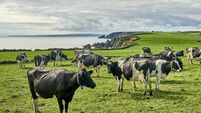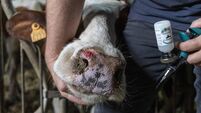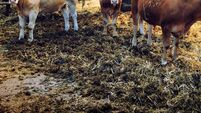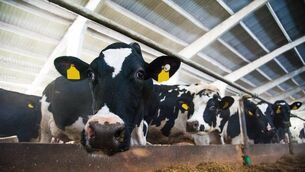On course for 1% per year farm income cut
This was one of the conclusions of Teagasc economists Trevor Donnellan and Kevin Hanrahan at the Teagasc Outlook 2003 conference in Dublin. No change in current policies would result in declining prices for the major dairy products.
This would lead to a drop of around 15% in milk prices compared with prices received over the last three years.
Beef prices would only show a slight fall over the coming decade, they said.
But and overall decline of 8% in the value of output was on the cards, with farm input costs increasing by 3%, combining to cut net income generated in the agricultural sector by 9%.
In contrast, full implementation of the EU’s CAP reform, combined with some changes in world trade policies after the World Trade Organisation (WTO) talks, would result in agricultural income in 2012 being similar to that in 2002.
The WTO changes involve the EU cutting its export subsidies by 45% and reducing tariffs on imports to the EU by 36%.
The EU proposals would hit prices for the major dairy products, leading to Irish milk prices declining by 10% more than they would apply if current policies were continued.
Beef cow numbers in Ireland would decline by 16% and beef output would fall by 6%. Beef prices would fall initially but, by 2012, would be 8% higher than if current policies continued.
There would be a major re-orientation of beef exports, with 95% of exports going to EU markets.
“The combined CAP reform and WTO changes would lead to a decline of 2% in the overall value of agricultural output by 2012 compared with a continuation of current policy”.
“Under these circumstances, expenditure on inputs by farmers would fall by 7%.
“By 2012, overall agricultural income would remain at the 2000/2002 average”.
“Due to the ‘decoupled’ subsidies and the drop in beef production, the proportion of farm income coming from subsidies would rise from 65% in 2002 to 75% in 2012.”, the economists predicted.
Professor Bob Young, University of Missouri, told the conference that world supplies of meats and milk are likely to keep up with demand levels.









